1-2 Child Development Frameworks
A – Developmental Concepts
Nature AND Nurture
The following quotation is a metaphorical description of how nature and nurture interact. It is attributed to Emeritus Professor of Psychology Charles Brewer of Furman University in Greenville, South Carolina.
“Heredity deals you the cards; environment plays them”
Common concepts in learning about development are nature and nurture. Nature is inherited genetic characteristics and tendencies. Nurture refers to the environmental conditions that surround a person.
For example, nature is people’s height, weight, and hair color. Nurture is actions, political views, and clothing designed for boys or girls.
One thing missing in the quotation is that the interaction between nature and nurture goes both ways—certain characteristics inherited through nature or genes and the way those genes or characteristics are expressed can change depending on children’s environments.
Children’s developmental outcomes evolve through the interaction between their genes and environment, not solely by one or the other.
Universality AND Diversity
When we think about development, we also need to think about the difference between universality and diversity.
Universality describes developmental changes and sequences that occur in all humans. Diversity refers to developmental changes that are individual.
For example, what is universal is that most children learn to sit, walk, and run in that in order. Examples of diversity in development are that parents in hunter-gatherer families in Papua New Guinea carry infants until they can walk while parents in other cultures may put infants down and encourage them to crawl. In Papua New Guinea, carrying infants can protect them from predators in the wild. Children in Papua New Guinea develop walking skills at the same rate as infants who crawled in other cultures.
Individual Differences
Research on child development tends to look at group averages for skills, such as the age when children usually speak first words. Yet, children can develop very differently from one another.
For example, this graph shows the number of words in children’s productive vocabularies (words they can say) at different ages.
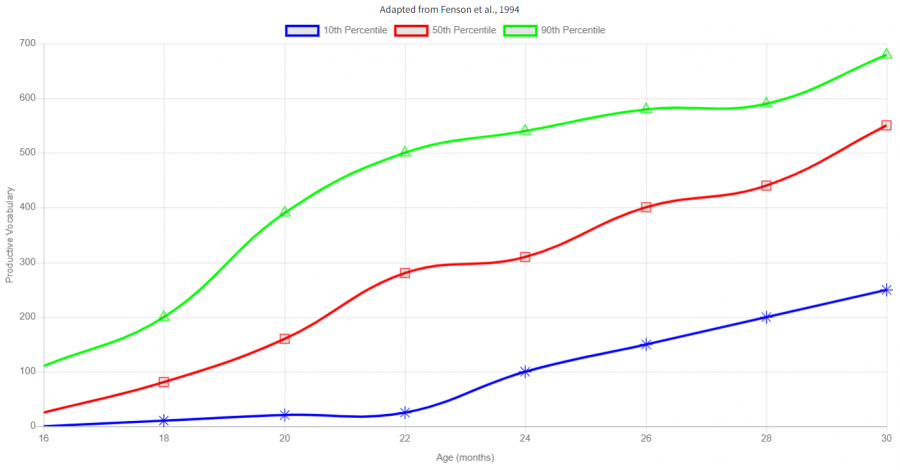
The blue line * shows that children in the 10th percentile have almost 300 words in their vocabularies at 30 months old.
The red line □ shows that the average child says about 300 words by 24 months old and nearly 600 words by 30 months old.
In contrast, the green line △ shows that children in the 90th percentile have nearly 700 words in their productive vocabularies at 30 months old.
This means that children in the 90th percentile (700 words) have more than double the amount of words that children in the 10th percentile (300 words) do.
Developmental Milestones
Both nature and nurture can contribute to individual differences in development. For example, the development of a child who is born blind (genetics) can vary, depending on the way that the family adapts the home (environment).
It is important to understand when children are not reaching developmental milestones and could benefit from additional resources and services.
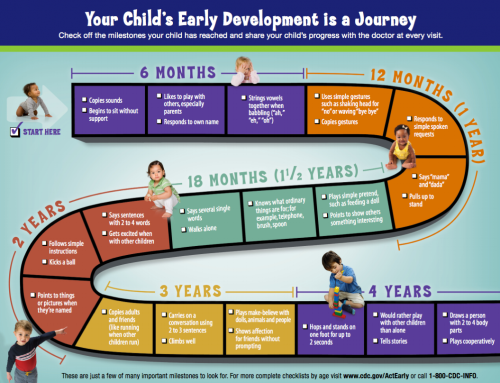
Knowledge of child development is essential to identification of atypical patterns of development. Resources like the Head Start Early Learning Outcomes Framework or those provided by the Centers for Disease Control and Prevention are useful to determine typical developmental stages at various ages.
In general, if you notice something atypical about a child’s development, you should pay attention to patterns and take careful notes rather than jumping to conclusions. You can communicate with parents and other staff members to verify their observations and to work together to understand the child’s development.
It is not your job to diagnose specific developmental issues but rather identify developmental patterns. You should invite parents to connect to early intervention or special education services so a professional can do a more detailed assessment based on the concerns. The earlier the identification of developmental delays, the greater the potential benefits of the services to the child and family.
B – Interconnected Development
Connecting skills
Children’s development is fundamentally interconnected because skills connect to each other.
Even though this course will present the different domains of development as they are in the Head Start Early Learning Outcomes Framework, development in each of these domains connects to development in all other domains.
For example, this course focuses extensively on language development. However, research says that children learn language through social relationships (Social and Emotional Development). Language skills allow children to count (Cognition) and describe what they see (Perceptual, Motor, and Physical Development). Language also allows children to learn rules to regulate their behavior (Approaches to Learning).
Video: Brushing Teeth Together (0:59)
This next video features preschoolers brushing their teeth together in an early learning setting. Think about these questions as you watch the video:
- What domains of development do you see?
- How do they connect?

Video Debrief
What are some examples from the video of domains that are connected? (click to toggle expand or collapse)
Possible Answer
In this video, examples of connected developmental domains are:
- Perceptual, Motor, and Physical—hygiene, fine motor hand coordination, and grasping.
- Approaches to Learning—reminders of steps in the routine such as “What do we do next?”
- Social and Emotional—relationships with adults and other children, requesting help and answers from adults, engaging other children in brief moments of play while brushing teeth.
One example of connected development is language and motor skills. The children are listening to instructions to pick up and use their toothbrushes.
The Active Learner
It is important to note that children are active agents in their environment. They are not passive beings waiting to be taught. They are explorers and scientists who act on their world to learn.
In other words, children’s environments do affect them, but the opposite is also true—children affect the environment.
For example, when young children babble, they are practicing making noises. They often imitate sounds that they hear other people make, and they will use babbling to elicit reactions from the adults around them.
Similarly, when children drop objects from their high chair, they are exploring their world: Does the object make a noise when it falls? Can I still see it when it falls? Will someone pick it up and give it to me again?
Child development is a complex process that is influenced by experience, culture, and individual differences.
Video: BABIES – Official Trailer (2:26)
This movie trailer features four infants from four different locations. As you watch the video, think about where you see these common developmental concepts:
- Nature and nurture
- Universality and diversity
- Individual differences
- Active learning
Watch BABIES – Official Trailer from Focus Features on YouTube.

Video Debrief
Where do you see these common developmental issues in the video? (click to toggle expand or collapse)
Possible Answer
Examples are:
- Nature and nurture: nature—differences in infants’ skin colors and hair (nature) and in their interactions with animals (nurture)
- Universality and diversity—crawling (universal), laying on backs or being held (diverse)
- Individual differences—one infant appearing to stand well before the others
- Active learning—Interacting with their environment, grabbing on to the goats, or watching the water in the shower
C – Theories of Development
Many scientists and philosophers have developed theories of child development. Theories gain and lose popularity, so many theories have become outdated over time.
Three theorists who have made a big impact on the world of child development and whose theories are still used and cited in some capacity are: Jean Piaget, Lev Vygotsky, and Urie Bronfenbrenner.
Piaget
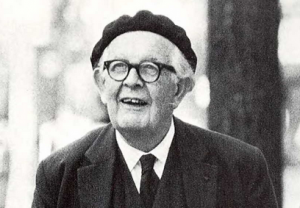
Jean Piaget believed that children construct their knowledge about the world by forming ideas, testing them, and refining their ideas based on their experiences.
Piaget’s view of cognitive development in early childhood can be broadly characterized by four stages: sensorimotor, pre-operational, concrete operational, and formal operational.
Sensorimotor. According to Piaget, children are in the sensorimotor stage from birth to age 2. In this stage, children learn to coordinate their own actions with objects in the physical world. The biggest accomplishment in this stage is an understanding of object permanence, the idea that an object still exists even when a person can’t see it.
Pre-operational. The second of Piaget’s stages is the pre-operational stage, which lasts from age 2 through age 7. In this stage, children engage in symbolic play and learn to manipulate objects as symbols. Although they do not yet understand concrete logic, they use pretend play to practice using symbols. Piaget noted that children in this stage of cognitive development are egocentric and have a difficult time understanding that other people have different beliefs and opinions.
Concrete operational. Children are in the concrete operational stage from age 7 to about age 11. This stage is characterized by children’s increasing ability to think logically, though children might still have trouble understanding abstract or hypothetical concepts.
Formal operational. Finally, children are in the formal operational stage from age 12, through puberty and into early adulthood, until age 20. In this stage, children become much more sophisticated in their ability to use logic and deductive reasoning.
Vygotsky
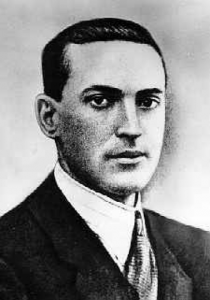
Lev Vygotsky emphasized the importance of relationships and mentorship in children’s learning and development.
He categorized children’s knowledge in three circles:
- Things children are capable of doing by themselves (the inner circle).
- Things that children are not yet capable of doing (the outer circle).
- A middle zone of things that children can do or learn with help (the middle circle).
Vygotsky called the middle circle of things that children can do with help the zone of proximal development (ZPD). Older or more capable people can help children acquire new skills by pushing them beyond their natural boundaries into the zone of proximal development to expand their repertoire of knowledge.
Bronfenbrenner
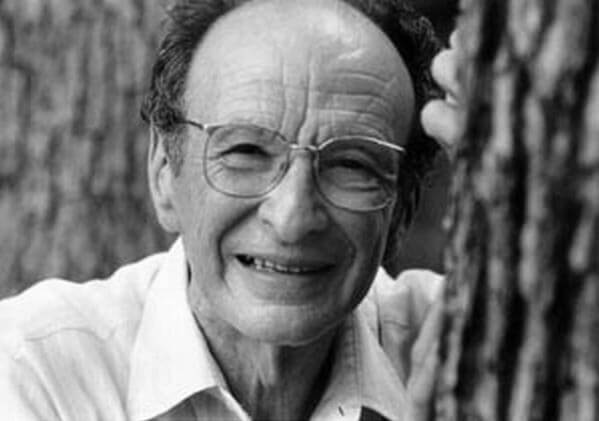
Urie Bronfenbrenner recognized that children develop within the context of their environments and that interactions between children and their environment are bidirectional. That is, children act on their environments and environments shape children.
His theory, and others like his, also propose that people are not living in an isolated world but instead in a broad system of intimate relationships with family, school, community, and society.
It is important to remember that children develop within environments that include many contexts, interactions, and individuals, and that all of this is happening in the context of time.
As Bronfenbrenner indicates, the most important influential context on child development is the microsystem, which includes the child’s family. Additional contexts influence the child and the family, directly and indirectly.
 Interactive: Bronfenbrenner’s Model
Interactive: Bronfenbrenner’s Model
This is an interactive model; click on the plus signs to reveal more about each circle.
Bronfenbrenner’s model continues to influence education today as educators consider parent engagement in children’s learning, schedule parent–teacher conferences, and make connections in communities.
 References
References
Berk, L. (2013). Child development (9th ed.). Boston: Pearson.
Bronfenbrenner Center for Translational Research. (n.d.). About us. College of Human Ecology. Cornell [Website].
Cultivate Learning (Producer). (2017). Brushing teeth together. University of Washington. [Video File]
Fenson, L., Dale, P., Reznick, J., Bates, E., Thal, D., Pethick, S., Tomasello, M., & Stiles, J. (1994). Variability in early communicative development. Monographs of the Society for Research in Child Development, 59(5), 1-185.
Focus Features. (2009, December 1). Babies: Official trailer. [Video]
Myers, D. (2011). Exploring psychology. New York, NY: Worth Publishers.
The Vigotsky Project. (2013). Lev Vygotsky 1896-1934 [Online image].
University of Michigan. (1968). [Untitled image of Jean Piaget]. In Michiganensian. [Online image]
U.S Department of Health and Human Services, Centers for Disease Control and Prevention. (n.d.). Track your child’s developmental milestones. [PDF]
EarlyEdU Alliance (Publisher). (2018). 1-2 Child development frameworks. In Child Development: Brain Building Course Book. University of Washington. [UW Pressbooks]

